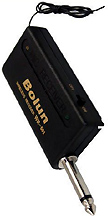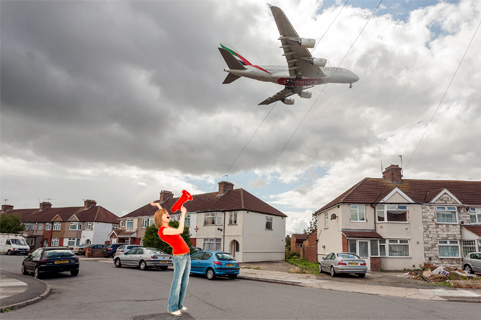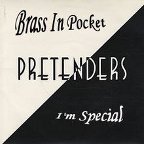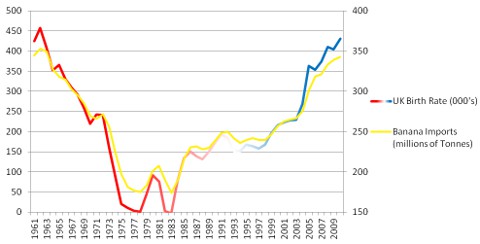Wednesday 4 September, 2013, 09:46 - Spectrum Management
Posted by Administrator
The new 700 MHz mobile band (703 - 748 paired with 758 - 803 MHz) is a hot topic amongst spectrum aficionados around the world. It raises a number of technical and political issues which are far from being fully resolved. On the political side, the main battle is between broadcasters (who currently occupy the band) and the mobile community who are keen to brush the broadcasters aside to clear the spectrum for more mobile broadband services. Broadcasters argue that they need more spectrum to cope with high definition and other developments whilst the mobile operators believe that the spectrum has greater value if used for extending broadband capacity and especially, given the good propagation characteristics at 700 MHz, the coverage, of their networks.Posted by Administrator
 Whilst the political issues are like a pile of tinder dry kindling just waiting for a spark to set them alight, there are technical problems to address as well: The way in which the band is paired means that mobile handsets will be transmitting in the frequencies immediately adjacent to television broadcasts. Television broadcasts using channel 48 (in the Region 1 8 MHz raster) will use frequencies up to 694 MHz. Mobile handsets will use frequencies as low as 703 MHz. This leaves a 9 MHz gap between the two.
Whilst the political issues are like a pile of tinder dry kindling just waiting for a spark to set them alight, there are technical problems to address as well: The way in which the band is paired means that mobile handsets will be transmitting in the frequencies immediately adjacent to television broadcasts. Television broadcasts using channel 48 (in the Region 1 8 MHz raster) will use frequencies up to 694 MHz. Mobile handsets will use frequencies as low as 703 MHz. This leaves a 9 MHz gap between the two.Whilst it might seem that the likelihood of a low power (50 milliWatt) transmission from a mobile phone causing interference to reception of a high power (100 kiloWatt) television service is small given the vast (2 million times) difference in transmitter power, the reality is that the mobile handset could be within only a few metres of the television receiver whereas the television transmitter might be tens of kilometers away. The strength of interference from the handset could therefore be orders of magnitude higher than the incoming television signal. Using free space path loss:
- A 50 mW (23 dBm) mobile transmitter 3 metres away produces a field strength of 91 dBuV/m
- A 100 kW (80 dBm) television transmitter 30 kilometers away produces a field strength of 68 dBuV/m
 The 9 MHz gap between the mobile transmissions and the television reception is known as a guard-band and is there to give a chance for the television receiver to filter out the unwanted mobile transmissions. There is plenty of work going on to check that this is the case but it will depend on a number of factors that are outside the control of the mobile operators or television broadcasters such as:
The 9 MHz gap between the mobile transmissions and the television reception is known as a guard-band and is there to give a chance for the television receiver to filter out the unwanted mobile transmissions. There is plenty of work going on to check that this is the case but it will depend on a number of factors that are outside the control of the mobile operators or television broadcasters such as:- The quality of the television receiver. Those made to a low price may not perform as well in this regard as more expensive receivers.
- The quality of the receiver installation. An old antenna may receive less signal and poor coax will allow more mobile signal to leak into the receiver exacerbating the problems.
- The proximity of the mobile transmitter to the television antenna. In the case where television reception is through a 'rabbit ears' antenna on top of the TV, the distance between the antenna and the mobile could be far less than 3 metres, or even 1 metre.
- The distance of the receiver from the television transmitter. Those close to the transmitter are less likely to suffer interference but those in areas of fringe reception are at much greater risk.
- The use of television signal amplifiers. Such amplifiers can easily overload and stop working when presented with a strong nearby mobile signal.
The rules of spectrum use state that new users should implement their transmitters in such a way as to protect existing, incumbent users from interference and in that respect, the work to ensure that the new mobile services do not cause harmful interference to television services is totally appropriate. But there is another technical issue that needs to be considered, that of interference from the television transmitter into the mobile network.
Consider a mobile base station that is 1 kilometer away from the television transmitter, trying to receive a signal from a mobile handset that is 500 metres away. Let's run the free space path loss equations again:
- A 50 mW (23 dBm) mobile transmitter 500 metres away produces a field strength of 47 dBuV/m
- A 100 kW (80 dBm) television transmitter 1 kilometer away produces a field strength of 98 dBuV/m
 In this case, the mobile signal would be 51 dB (or 125,000 times) weaker than the television transmitter. Again the 9 MHz guard-band is there to allow the mobile base station to filter out the television transmission but the job is much (much!) more difficult. Move the mobile handset further away from the base station, or increase the transmitter power of the television signal, or move the base station closer to the television transmitter and the situation gets even worse. In terms of who needs to protect who from interference, interference caused by the television signal into the mobile networks is secondary to ensuring the protection of television reception but is potentially an equally burning problem.
In this case, the mobile signal would be 51 dB (or 125,000 times) weaker than the television transmitter. Again the 9 MHz guard-band is there to allow the mobile base station to filter out the television transmission but the job is much (much!) more difficult. Move the mobile handset further away from the base station, or increase the transmitter power of the television signal, or move the base station closer to the television transmitter and the situation gets even worse. In terms of who needs to protect who from interference, interference caused by the television signal into the mobile networks is secondary to ensuring the protection of television reception but is potentially an equally burning problem.Whilst it is possible to develop filters that can provide 50 dB, 60 dB or even more rejection of the television signals, they are costly. Of course not every site requires such an expensive filter: only those close to television transmitters on channel 48 will need them. But whilst television frequency use is not normally very dynamic, as re-planning of networks takes a lot of co-ordination, they do change channel from time-to-time and so knowing which site to fit the filters to cannot be done with complete certainty.
So if the political issues form tinder dry kindling just waiting to be lit, the problems of interference from mobile handsets into television receivers are a bucket of petrol poured on that kindling. It may therefore be that the problems of interference from television transmitters into the mobile network are the spark that gets the fire burning!

1 comment
( 5680 views )
| permalink
| 



 ( 2.8 / 1546 )
( 2.8 / 1546 )




 ( 2.8 / 1546 )
( 2.8 / 1546 )
Saturday 31 August, 2013, 15:07 - Spectrum Management
Posted by Administrator
Posted by Administrator
 According to an article in the Daily Mail, a funeral taking place in Windsor, direcly under the flightpath for aircraft landing at London Heathrow airport was interrupted by the voice of a stewardess coming over the church's public address PA system saying, "fasten your seatbelts", and, "prepare the doors for landing".
According to an article in the Daily Mail, a funeral taking place in Windsor, direcly under the flightpath for aircraft landing at London Heathrow airport was interrupted by the voice of a stewardess coming over the church's public address PA system saying, "fasten your seatbelts", and, "prepare the doors for landing".The article claims that this occured because the 'church's wireless microphone and the plane's radio were on the same frequency'. Radio microphones in the UK operate in a variety of frequency bands. Most commonly they operated between 173.1 to 175 MHz and 863 to 865 MHz, both of which are available on a licence-exempt basis for such purposes. There are other frequencies available but these are subject to the need for a licence and are only normally used for professional programme making and special event (PMSE) uses. Most domestic and everyday business use (including local DJs, schools, hotels and churches) use the licence-exempt channels.
So how could the church's radio microphone be operating on the same frequency as an aircraft? If this is true, there are two possibilities:
- The systems on-board the aircraft used the same licence-exempt frequencies that the church's radio microphone used. Or
- The radio microphone system being used by the church was not on the officially sanctioned frequencies but was operating on frequencies reserved for aeronautical communications.
The CEPT has considered the use of short-range devices on board aircraft and it has concluded that, from the regulatory perspective, such use is allowed under the same conditions provided in the relevant Annex of Recommendation 70-03. For aviation safety aspects, the CEPT is not the right body to address this matter which remains the responsibility of aircraft manufacturers or aircraft owners who should consult with the relevant national or regional aviation bodies before the installation and use of such devices on board aircraft.
So it would not be illegal for an aircraft manufacturer to use licence-exempt wireless microphones on-board their planes. There is also increasing interest in using wireless technology to control the actual flight of the aircraft (the ailerons, flap, engines and so on). Planes using 'fly-by-wireless' technology have already been tested and there are now moves to try and find dedicated spectrum for them to operate in. This negates the need for the usual wiring that is required and saves weight which in turn saves fuel and cost.
 Looking at the second possibility, there are radio microphones on the market which operate in the aeronautical communications (VHF) band from 108 to 137 MHz. These devices, commonly imported from China, are available on internet outlets at very low cost (check the frequency range on this microphone for example). They are, of course, completely illegal to use and not only are they subject to the kind of interference from aircraft that would have caused the problem in our church above, but they also have the potential to cause interference to air-to-ground aircraft communications which is stupid and potentially life-threatening. However despite such devices being available, this scenario is much less likely because the stewardess's voice would not be transmitted on the air-to-ground communication frequencies which are for pilot and air traffic controller communications only.
Looking at the second possibility, there are radio microphones on the market which operate in the aeronautical communications (VHF) band from 108 to 137 MHz. These devices, commonly imported from China, are available on internet outlets at very low cost (check the frequency range on this microphone for example). They are, of course, completely illegal to use and not only are they subject to the kind of interference from aircraft that would have caused the problem in our church above, but they also have the potential to cause interference to air-to-ground aircraft communications which is stupid and potentially life-threatening. However despite such devices being available, this scenario is much less likely because the stewardess's voice would not be transmitted on the air-to-ground communication frequencies which are for pilot and air traffic controller communications only.So it seems that it was probably the use of licence-excempt frequencies for short-range audio communications on-board the aircraft that was the culprit. It's worth considering that interference is usually bi-directional, especially where the systems are using similar powers and modulation. So it is just as likely that passengers on-board the aircraft could have been subject to the eulogy being given from the church as vice versa.
Which opens up a completely legal but very naughty set of ruses that anyone with suitable equipment could carry out if particularly bored on, say, a Sunday afternoon. Just stand near the end of the runway at an airport with a completely legal radio microphone operating, most likely, on the 863 to 865 MHz band and pick yourself a channel. As each aircraft comes overhead shout 'Brace, brace, brace' and if the aircraft's on-board wireless audio system happens to be on the same channel as your microphone the passengers are going to go ape. Of course, Wireless Waffle would never condone such activity, but if aircraft manufacturers are going to use licence-exempt frequencies, which are subject to no protection from interference, for on-board communications they are opening themselves up to all manner of prankery. If they choose to use bluetooth to actually control the aircraft itself, heavens only knows what might happen. Perhaps it would be best to stick to using wires or even optic fibre for controlling aircraft.

Tuesday 7 May, 2013, 08:14 - Spectrum Management
Posted by Administrator
Posted by Administrator
 The Aussie auction of 700 MHz spectrum (one of the first of it's kind in the world) has, on the one hand, left the Australian government a few cents short of a brass razoo but at the same time left operators paying big bikkies for the spectrum. Wireless Waffle has previously discussed who the winner of the UK spectrum auction actually was. Whilst the UK auction (and most others around the world) are for 800 MHz spectrum, the Australian auction is relatively unique in that it is for 700 MHz spectrum. The auction has left a third of the available 700 MHz unsold, which is not a good place to be as: (a) the spectrum is not being used, which is clearly inefficient, and (b) it means it will have to be re-auctioned, which means a bit more hard yakka for the Australian regulator ACMA.
The Aussie auction of 700 MHz spectrum (one of the first of it's kind in the world) has, on the one hand, left the Australian government a few cents short of a brass razoo but at the same time left operators paying big bikkies for the spectrum. Wireless Waffle has previously discussed who the winner of the UK spectrum auction actually was. Whilst the UK auction (and most others around the world) are for 800 MHz spectrum, the Australian auction is relatively unique in that it is for 700 MHz spectrum. The auction has left a third of the available 700 MHz unsold, which is not a good place to be as: (a) the spectrum is not being used, which is clearly inefficient, and (b) it means it will have to be re-auctioned, which means a bit more hard yakka for the Australian regulator ACMA.The fact that spectrum could remain unsold had been predicted by some, as a result of having set the reserve price too high. So just how does the price paid in the Australian auction compare to that paid elsewhere? The table below sets out the prices paid for 800 MHz spectrum in Germany, France, Italy and the UK and compares this to the price paid for 700 MHz spectrum in Australia. The comparison made is on a 'price per MHz per population' basis and for fun, GDP (PPP) has been factored in to see whether this makes any odds. Prices are all converted to Euro.
| Country | Band | Euro per MHz per pop | Euro per MHz per pop (GDP adjusted) |
|---|---|---|---|
| Germany | 800 MHz | 0.73 | 0.68 |
| France | 800 MHz | 0.69 | 0.71 |
| Italy | 800 MHz | 0.83 | 0.98 |
| United Kingdom | 800 MHz | 0.51 | 0.52 |
| Australia | 700 MHz | 1.06 | 0.92 |
What does this tell us? Other than the fact that it demonstrates an ability of Wireless Waffle to do some simple maths, it shows that the price paid per MHz per person in Australia was almost 40% higher than the average of all these countries put together. Similarly, when scaled for GDP, the price paid is still 20% over the odds. The only more expensive spectrum was that sold in Italy and this is only because Italy's GDP per capita is somewhat smaller.
So why would operators down under be willing to shell out more moolah for spectrum than elsewhere? Perhaps the secret lies in the rapid population growth taking place. Just a few days ago, it was predicted that the Australian population had reached 23 million. But more importantly, the population is predicted to rise to 40 million in around 40 years time representing growth of around 1.5% per year. This is much faster than the population growth in other countries and means that in just 10 years time, the population of Australia will be 15% larger. If you do the price per person calculation now, the €1.06 becomes €0.92 and the €0.92 becomes €0.80. This puts the prices on a GDP adjusted basis just 5% ahead of average. In 15 years time the prices would be 5% below average. So over the life of the licence maybe these prices are not too high. Of course the population of other countries is growing too, and this would have to be factored in to any more detailed comparisons (such as a competent economist might make).

There are statistics to show that the number of bananas imported into the UK is closely correlated with the growth in population (as the above graph clearly demonstrates). It therefore follows, using Spock-strength logic, that there is a connection between bananas and the price differentials paid at auction for spectrum. Australia grows lots of bananas and it's population is rising, and lots was paid at auction. Q.E.D. as they used to say in ancient Rome.
What does this prove? Nothing at all, but having called the European Commission 'nuts' last month, the time was right to make another foodstuff related comment about a regulator somewhere or other. And so it seems (as so obviously can be deduced) ACMA is clearly bananas!

 Over 5 years ago, Wireless Waffle reported on the fact that a UK radio ham repeater was forced off air to stop interference to licence-exempt 'wireless car unlocking keys' (and no excuses are necessary for re-using the rather fetching graphic one again). In this instance, because radio amateurs are secondary users of the band, and often regarded as second class citizens by regulatory authorities, it was the hams that had to find a solution. The fact that the value of the spectrum used by radio hams is generally rather large, yet they pay little or no licence fees, no doubt increases regulatory lethargy when it comes to lending a hand to deal with these kind of problems.
Over 5 years ago, Wireless Waffle reported on the fact that a UK radio ham repeater was forced off air to stop interference to licence-exempt 'wireless car unlocking keys' (and no excuses are necessary for re-using the rather fetching graphic one again). In this instance, because radio amateurs are secondary users of the band, and often regarded as second class citizens by regulatory authorities, it was the hams that had to find a solution. The fact that the value of the spectrum used by radio hams is generally rather large, yet they pay little or no licence fees, no doubt increases regulatory lethargy when it comes to lending a hand to deal with these kind of problems.In the USA, however, the same situation has occurred, but instead of it being radio hams that caused the problem, it was the US military. And instead of it being wireless car keys being interfered with, it was wireless garage door openers. It seems that residents of Savannah (Georgia) have found their wireless garage door openers have stopped operating. The problem is caused by radio base stations at nearby military facilities which have begun operating in the frequency range 380 to 399.9 MHz, which has hitherto been a common band for wireless garage openers.
But unlike in the UK, the US military have stood their ground and said that it's tough luck for anyone who is affected as the spectrum is rightfully theirs. According to US Government Accountability Office report GAO-06-172R:
To address homeland defense needs and comply with government direction that agencies use the electromagnetic spectrum more efficiently, the Department of Defense (DOD) is deploying new Land Mobile Radios to military installations across the country. The new Land Mobile Radios operate in the same frequency range (380 to 399.9 MHz) as many unlicensed low-powered garage door openers, which have operated in this range for years. While DOD has been the authorized user of this spectrum range for several decades, their use of Land Mobile Radios between 380 and 399.9 MHz is relatively new. With DOD's deployment of the new radios and increased use of the 380-399.9 MHz range of spectrum, some users of garage door openers have experienced varying levels of inoperability that has been attributed to interference caused by the new radios. Nevertheless, because garage door openers operate as unlicensed devices, they must accept any interference from authorized spectrum users.
Yay! A big thumbs up for common sense, or at least from a spectrum management perspective that's what it is. But most legal cases use the 'reasonable person' principal. This basically asks the question, 'What would a reasonable person regard as the correct solution?' So... Is it reasonable that the military should be able to use radio spectrum that is rightfully theirs to defend the country, or is it more important to allow people to be able to open their garage doors without getting out of their cars? In this case, the reasonable person (even if that person happened to be the owner of a wireless garage door opener) would probably cede that the military boys have a point.
Now ask the same question for radio hams... Is it reasonable that radio hams should be able to use radio spectrum that is rightfully theirs to talk about radio stuff, or is it more important to allow people to be able to unlock their cars without putting their key into them? The answer in this case is less clear. The reason for this is probably to do with the description of who is using the spectrum for what.
Most people would agree that 'defending the country' was of high value compared to general laziness in door opening practises. But 'talking about radio stuff', well that's a different case altogether. Of course radio hams do use their frequencies for emergency communications and organisations such as Raynet would no doubt argue that use of radio ham frequencies is not about 'talking about radio stuff' but is more about providing a 'national voluntary communications service provided for the community'. If every radio ham was a member of an organisation such as Raynet then perhaps this would hold some water, but listen to your local radio ham repeater (you can check out the GB7OK and GB3OK repeaters online). I'd call that 'talking about radio stuff', wouldn't you?
For a bit of fun, below is a poll. Which of the uses of the spectrum do you value most highly? Just select the ones that you think are the most valuable and click 'submit' and the results so far will be displayed to you.

